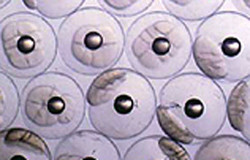
Japan’s farmed bluefin sector found stronger footing
Editor/Mohamed Shihab
Japan’s Fisheries Agency has released its preliminary figures for domestic bluefin tuna farming performance in 2021, showing the number of farms, the stocking of both wild and hatchery seedlings, and the total production by number and weight have all increased in the past year.
The agency has surveyed and summarized cultivation results reported by bluefin tuna farmers nationwide since 2011, in line with a 2010 policy document titled "Response to Strengthening Pacific Bluefin Tuna Management.”
Japan had 88 bluefin tuna-farming entities in operation in 2021, down by two from 2020. The total number of farms reached 187, up by one; Some cooperatives or companies operate multiple farm sites. The number of bluefin tuna farmed seedlings stocked to net pens was 541,000, an increase of 35,000 (or 6.9 percent) compared to 506,000 in 2020. Of these, the number of natural seedlings was 339,000, an increase of 14,000 (or 4.3 percent) compared to 325,000 in 2020, and the number of artificial seedlings was 202,000, which is 21,000 (or 11.6 percent) more than the 181,000 in 2020.
The number of bluefin tuna shipped in 2021 was 295,000, an increase of 18,000 from 277,000 in 2020, and the weight of farmed bluefin tuna shipped was 21,460 metric tons (MT), up by 3,292 MT (or 18.1 percent) from 18,169 MT in the previous year.These results contrast with those posted in 2020, when stocking and production declined amid depressed prices for high-end fish.
Regarding the ratio of wild to artificial (hatchery-reared) seedlings, in practice, a larger number of artificial seedlings would be needed to account for the differential in mortality totals, as natural seedlings are harvested with a body length of 30 centimeters or more, while artificial seedlings are stocks at a much smaller size of about 5 centimeters. As a result, many artificial seedlings die before reaching 30 centimeters, making a direct comparison of stocked numbers misleading.
Farm operators generally choose to use the natural seedlings, which have larger size, better survivability, and lower cost than hatchery seedlings. However, in response to a 2019 directive from Japan’s Minister of Agriculture, Forestry, and Fisheries in 2019, new aquaculture sites and nets are restricted to using only artificial seedlings. Of the 185 aquaculture sites active in 2020, 75 were restricted to using only artificial seedlings. The remaining 111 farms were limited in terms of the number of cages they were permitted to use for natural seedlings in order to avoid having to obtain new permits for the harvesting of the seedlings (called chige or mojako in Japanese).
By prefecture (the Japanese equivalent of a state or province), in 2021, Nagasaki stocked the highest number of wild seedlings, at 339,000; followed by Ehime with 110,000; Kagoshima with 47,000; Kochi with 42,000; Ehime with 35,000; and Mie with 34,000. For artificial seedlings, Okinawa was the leader with 100,000 seedlings stocked, reflecting the presence of a research nursery there. It was followed by Ehime with 53,000 seedlings; Nagasaki with 20,000; Wakayama (where Kindai University and its bluefin farming research center is located) with 17,000; and Kagoshima prefecture with 12,000.
In December 2021, artificial seedling production cleared a bottleneck, as Yokohama-based feed manufacturer Nippon Agricultural Industry Co. (nicknamed Nosan) reported successfully raising bluefin tuna seedlings on formulated feed. The company, a wholly-owned subsidiary of Mitsubishi, said the does eliminates the need to feed live fish larvae up around five centimeters, at which size they can be stocked offshore.
Mass production of closed-cycle bluefin tuna is restricted by significant early mortality, mainly due to the requirement of live feed that exactly matches the tuna’s size and stage of growth (with secondary reasons for mortality include the elimination of smaller fish by cannibalism and tank wall collisions). In the larval stage, rotifers have been the food of choice. As the tuna grow, the feed can be transitioned to larger copepods, and then to the larvae of other fish, such as striped beakfish. Management of rotifers and fish larvae are problematic as dependence on such live feed effectively means hatchery operators are growing, managing, and attempting to match the sizes of both the feed-fish and the tuna.
It is unclear whether Nosan’s new feed can also replace rotifers in the diet of farmed Pacific bluefin tuan. An article in the Madridge Journal of Aquaculture Research and Development, authored by Indian and Japanese researchers and published in 2018, noted that in Japan, an average hatchery requires 20 billion rotifers per day. In Europe, rotifer production is described as labor intensive and prone to unpredictable production volumes and occasional crashes.
Photo courtesy of Kindai University


ساحة النقاش